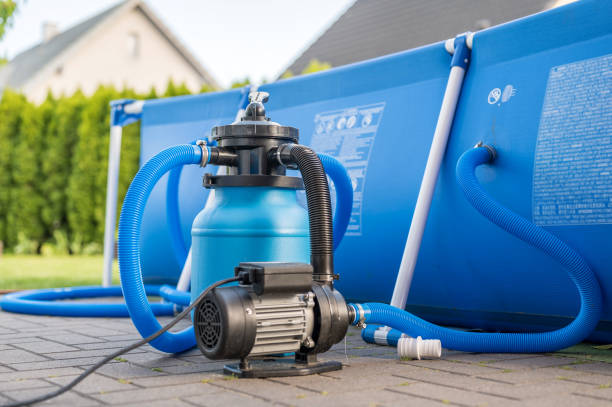Before you can begin, you should make sure the power is turned off. Then, open the rear pump motor cover and tilt it up to reveal the wires. The incoming wires consist of two power leads and one ground wire. Then, you should remove the conduit fitting with pliers from the old pump motor and insert it into the new one.
Properly sizing a pool pump
One of the most important aspects of pool maintenance is appropriately sizing the pump. If it is undersized, your pool can end up looking like a dead zone. That means the water can stagnate and algae will start to grow. Oversizing a pump can lead to extra wear and tear on your equipment.
To properly size a pool pumps Perth, first calculate the total volume of water in your pool. Then, divide this figure by 60 to determine the proper horsepower. You can also use a swimming pool gallon calculator to get the exact figure of water flow your pool requires. This will give you the amount of water your pump can handle. In addition, you should also measure the depth and width of your pool.
When sizing a pool pump, make sure to consider the total dynamic head of the entire pool system. This is the number of gallons per minute (GPM) of water. You’ll also need to account for the resistance in the pool plumbing system, known as the head. This is measured in feet of head, and most residential pools will be in the 20 to 50-foot range. Once you’ve determined these two factors, you can compare the appropriate horsepower for your needs.
Inspecting a pool pump before replacing it
It’s important to inspect your pool pump thoroughly before you replace it. The motor, impeller, and housing should all be free of cracks and debris. It should also have no rust or discoloration. Its bolts should be free from debris and its voltage should be within the specified range, plus ten percent.
The inspector will also check the electrical and plumbing lines. The inspector will look at the breakers to make sure that the equipment is operating properly. The return line should be free of bubbles or other signs of a suction leak. Additionally, the inspector will check the surrounding variables, such as the drain and gutters. Proper drainage is essential to preventing overflows into the pool.
Inspecting a pool pump before replacing is necessary because a broken pump could cause bigger issues. Not only will the water leak damage your pool, but it will also be noted on your home inspection report. A swimming pool is a major investment and must be taken care of to keep it in good condition.
Properly connecting a pool pump
If you have an electric pool pump, it is important to connect the pump properly to avoid electrical shock. Connecting the pump to the wrong voltage can also damage the motor and void the warranty. The voltage used for swimming pools is usually between 230V and 240V. Many pool pump manufacturers list the voltage on the label. The pump is powered by three wires: white (neutral), black (hot), and green (ground). Before connecting the pump, make sure that you know which wires are connected to the motor.
In addition to ensuring proper wiring, it is important to bond the pump to the pool’s electrical system. This bonding process equalizes the voltage of different parts of the pool and prevents electricity from jumping around. This will help keep the pool pump and other electrical equipment safe.
Properly priming a pool pump
If you want to avoid having trouble with your pool pump, learn how to properly prime it. The process is easy and only requires a few steps. Before you begin, you should shut off the power to your pump and check the air release valve. First, remove the lid of the pump’s strainer basket. Remove any dirt and debris from the basket, and then examine the O-ring on top of the pump. If it is not intact, replace the pump.
Before you can start using your new pool pump, you must ensure that it is properly primed. If you fail to do this, your pump will run dry. During the winter months, the pump can be prone to damage due to the freezing temperatures. If it runs dry, it can cause expensive problems.
Backwashing a pool pump
Backwashing your pool pump is essential for the proper operation of your filter. Normally, you should perform a one-minute backwash followed by a twenty-second rinse. Failure to do this can cause problems with the water flow of the pump. Excess debris can also cause dirty water problems.
To backwash a pool pump, you must first turn off the pump system before starting the process. Most multiport systems will have a dedicated backwash hose. The hose should be inserted into the port and attached to the pump’s multiport valve. This ensures that the internal plumbing seats properly.
Conclusion
Before you backwash a pool pump, check its specifications. Some models require that you change the sand media every five years or so. Cartridge filters, on the other hand, require that the filter element be changed every 18 months. If you’re not sure how often you need to backwash a filter, call a certified pool expert to perform this task for you.
